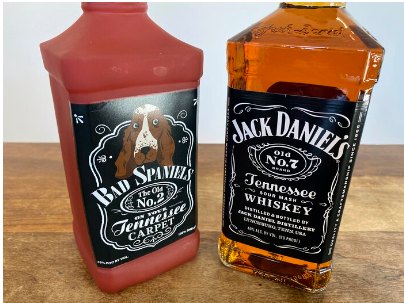Section 101: The Wrath of Rader
 Analysis by former Federal Circuit judge, Randall Rader about the Federal Circuit’s blundering of the application of 35 U.S.C. § 101 (in layperson's language, determination subject matter eligible for patenting)"Rader Calls Out Fed. Circ.'s Role In Patent Law Confusion” - Law360) is spot on. Many followers to OP-IP have heard me rag on the Federal Circuit for making the determination of patent eligibility under § 101 more confusing than less. Rader was quoted as saying "Sadly, the Federal Circuit, the court that should be identifying problems, is instead doing exactly the opposite and perpetuating them." To that I say, Amen!
Analysis by former Federal Circuit judge, Randall Rader about the Federal Circuit’s blundering of the application of 35 U.S.C. § 101 (in layperson's language, determination subject matter eligible for patenting)"Rader Calls Out Fed. Circ.'s Role In Patent Law Confusion” - Law360) is spot on. Many followers to OP-IP have heard me rag on the Federal Circuit for making the determination of patent eligibility under § 101 more confusing than less. Rader was quoted as saying "Sadly, the Federal Circuit, the court that should be identifying problems, is instead doing exactly the opposite and perpetuating them." To that I say, Amen!Rader did not limit his ire to the Federal Circuit. Rather he purportedly also acknowledged that the Supreme Court is no friend to those trying to understand what is and is not patent eligible, figuratively assigning “poor grades” to the unworkable Supreme Court decisions in
Alice v. CLS Bank and its other subsequent judicial decisions directed to establishing patent eligibility.
As someone who had a front row seat at the oral augments in Alice,
(click for OP-IP analysis) the Supreme Court whiffed at an opportunity to define and clarify the metes and bound of an "abstract idea." The lack of guidance is even more disheartening when you consider that the Supreme Court, itself, created the judicial exception disqualifying "abstract ideas" from patenting. See
Le Roy v. Tatham, 55 U.S. 156 (1852). In other words, the Supreme Court's own precedent established "abstract ideas" as disqualifying an invention (subject matter) from patent eligibility, yet, the Supreme Court refuses to define what is or is not an abstract idea, how to identify an abstract idea, and when an idea is abstract and when an idea is not abstract.
So what does that mean? For some that may be becoming more active in trade organizations that present their challenges to Congress. For legal organizations, e.g. ABA, AIPLA, etc. that may be to continue efforts to propose legislative reforms to clarify patent eligibly so that its determination is not subject to an unworkable algorithm.
We would love to hear what others propose for making the determination of patent subject matter eligibility easily, more consistently and much more objectively determined.
I'll get that conversation going. Consider the following possible revision to the §101 patent eligibility statute language...
35 U.S. Code § 101 - Inventions patentable
Whoever invents or [discovers] creates
any [new and] useful process,
machine, manufacture, or composition of matter, or any [new and] useful
improvement thereof, may obtain a patent therefor, SUBJECT TO THE CONDITIONS
AND REQUIREMENTS OF THIS TITLE.*
(* subject to the conditions...allows for the deletion of "new" as this concept is covered by §§ 102 and 103, and more importantly, has led to patent eligibility test(s) that included a novelty, newness or level of innovation analysis; deletion of "discovers" seen as possibly problematic leading to the consideration of things "discovered" that exist in nature, naturally occurring or mathematical phenomena and were not invented, created or implemented by inventors, i.e. humans**)
(**humans...a conversation for another blog post)




